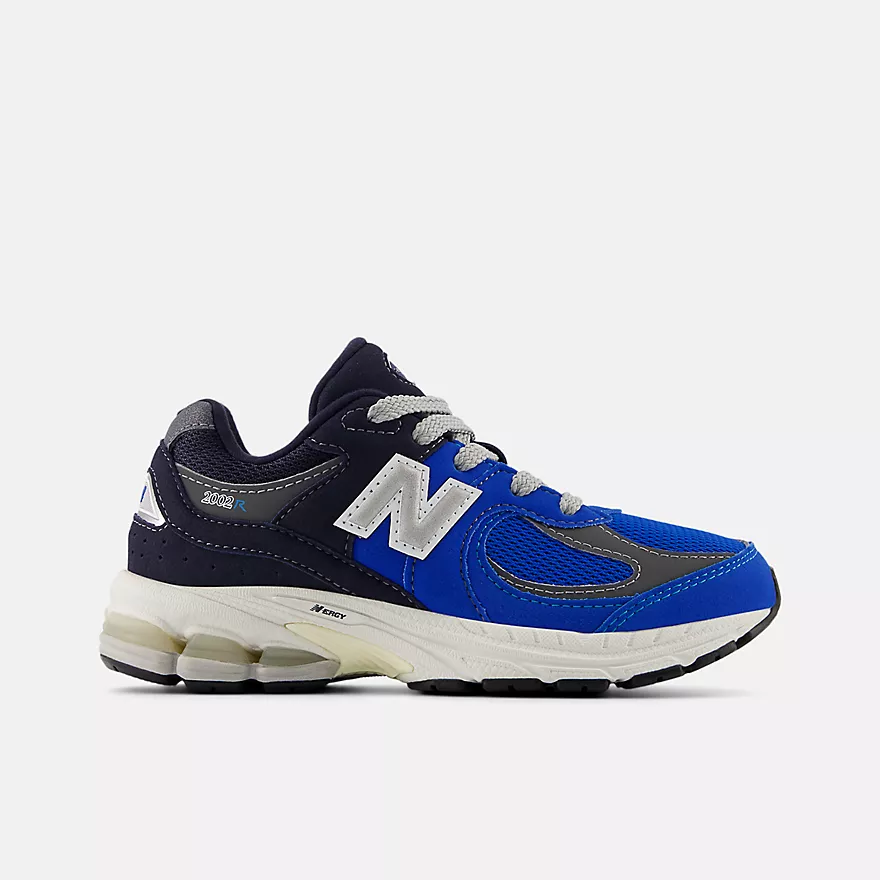Shoes for Kids with Ankle Pain – Firm Heel Counters and Supportive Outsoles
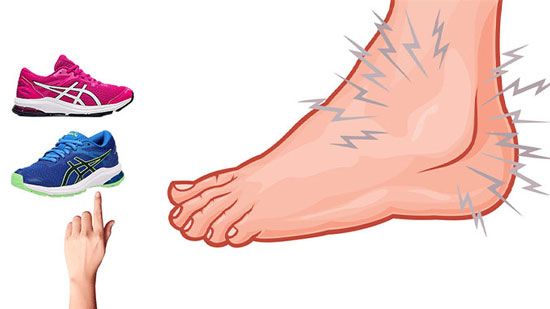
Has your child been complaining about ankle pain? Foot and ankle pain are common in children, particularly in children who are very active and participate in organized sports, but this doesn’t mean that the pain should be left untreated. Providing your child with the correct types of shoes can make a world of difference in significantly reducing, or completely eliminating your child’s ankle pain. Let me show you the best shoes for kids with ankle pain based on my many years of shoe fitting experience.
Pro Tip: If you’re pressed for time, you can go straight to the selection of the shoes for kids with ankle pain.
My Role Helping Kids with Ankle Pain
Through my 10+ years from working on a specialized children’s shoe store, I have become familiar with the best shoes for kids with ankle pain. Several physical and occupational therapists refer families to the shoe store to be fitted for supportive shoes, and depending on the degree of the child’s foot condition, orthotics as well. I like to start by trying a pair of supportive shoes and monitor whether the child’s ankle pain is significantly reduced or fully eliminated. If the pain persists, I usually proceed by trying a pair of heel cups or orthotics inside of the shoes.
While there might be more than one reason why your child is experiencing ankle pain, I usually suggest to start by making sure that your child is wearing the correct types of shoes in the correct size. You have no idea how many children were experiencing ankle pain from wearing the wrong types of shoes.
What is Causing Your Child’s Ankles to Hurt?
Ankle pain among children is usually linked to a more active lifestyle, genetics, injury, or wearing unsupportive and ill-fitting shoes.
Most foot and ankle pain in children are associated with minor trauma or repetitive stress combined with abnormal biomechanics that can be caused by having flat feet. For example, children with flat feet put tremendous excess pressure on the joints of the feet, ankles and legs.
What a Difference the Correct Types of Shoes Can Make!
Let’s take a look at an image of a flat-footed child standing barefoot. Do you notice how the child’s feet are collapsing and turning inwards? Do you notice how the child’s right foot is turning inwards excessively?
First Image: Child with Flat Feet Standing Barefoot
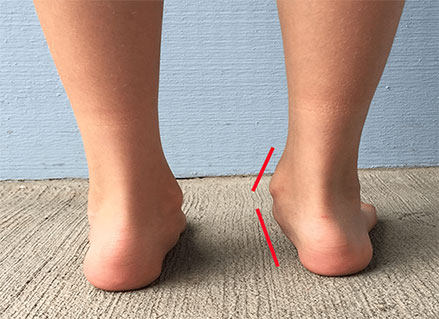
Second Image: Same Child with Flat Feet Wearing Unsupportive Shoes
Now let’s take a look at an image of the same child wearing a pair of his current sneakers. Do you notice how the child’s feet are still collapsing inwards? It’s clear that the shoes are not supportive enough.
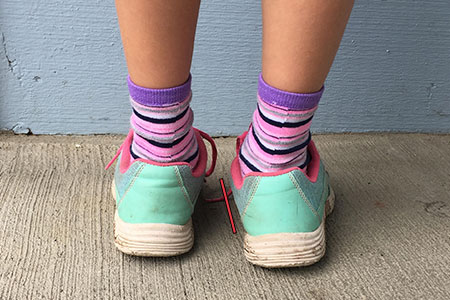
Third Image: Same Child with Flat Feet Wearing Supportive Shoes
Let’s see what happens when we fit that same child in a pair of the supportive shoes that I recommend. Do you notice how the child’s feet are a lot straighter? The substantial outsoles of the shoe and the firm heel counter are preventing the child’s feet from collapsing and turning inwards.
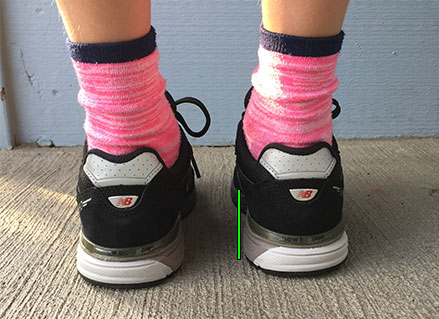
Wow! What a difference the correct types of shoes can make!
Something so simple as providing your child with the correct pair of shoes can make a world of difference when it comes to improving your child’s walking gait, overall posture, and reducing or completely eliminating foot and ankle pain.
What Makes the Shoes that I Recommend Effective for Ankle Pain?
The shoes that I recommend provide 3 key features that make them ideal for children with ankle pain:
1️⃣ Firm Heel Counters: The heel counter is the back part of the shoes, and the firmer it is, the better heel and ankle support that it provides. One good exercise that I recommend parents do is to grab their child’s current shoes and press on the heel counter area. This will help you determine whether your child’s shoes provide good ankle support or not. Take a look at the image below for better visualization purposes:

2️⃣ Targeted Cushion Below the Heels: The shoes that I recommend provide extra padding and cushion right below the heels, to minimize the impact that your child’s feet take when they come in contact with the ground.
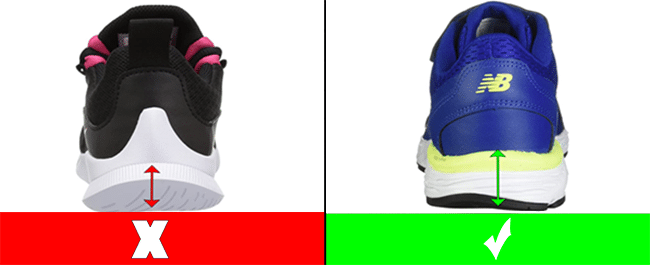
3️⃣ Supportive Outsoles: It’s important that you provide your child with shoes that provide substantial and supportive outsoles to minimize the impact that the feet take when they come in contact with the ground.
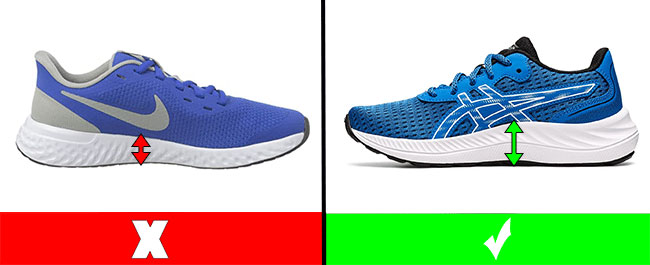
Read This Before Ordering Your Kids’ Shoes Online
You can provide your child with the most supportive pair of shoes, but if the shoes are not fitted correctly (proper length and width), your child won’t get any of the benefits that the shoes have to offer.
I suggest that you start by taking a look at a resource I created where I showcase the best children’s shoe stores by state.
If after looking at that resource you don’t find a specialized children’s shoe store close in your area, I suggest that you take a look at the resource below. In the article below I help parents determine their children’s exact foot size, including length and shape (narrow, medium, wide, extra wide, high instep).
Let’s now take a look at the best shoes for kids with ankle pain. Disclosure: Some links in this post may be affiliate links and we may receive a small commission (at no extra cost to you) when you click our links and make purchases.
Best Shoes for Kids with Ankle Pain
The shoes below provide all of the 3 features that I mentioned before, and they are available in medium (M), wide (W), and extra wide (XW) widths. Take a look at the description below each shoe image to check whether that specific style can fit the shape of your child’s feet.
Little Kid Shoe Sizes (10.5 to 3)
- New Balance shoe style 2022
- Available in medium and wide widths
- Durance rubber outsole technology provides superior durability in high-wear areas to help get more out of the shoes
- Non-marking outsole
- Order this shoe a whole larger than your child’s current foot size
- New Balance shoe style 2022
- Fits children with medium or wide feet
- Durable leather/suede mesh upper
- Stability Web outsole technology provides added arch support
- Order this shoe a half size larger than your child’s current foot size
- Shoe style Axon by Saucony
- Available in medium and wide widths
- EVA midsole provides increased shock attenuation, responsive cushioning and lasting durability
- Cushioned footbed
- Order this shoe a whole size larger than your child’s current foot size
- Shoe style Axon by Saucony
- Available in medium and wide widths
- EVA midsole provides increased shock attenuation, responsive cushioning and lasting durability
- Padded tongue and collar
- Cushioned footbed
- Order this shoe a whole size larger than your child’s current foot size
- New Balance shoe style Fresh Foam 880V12
- Available in medium and wide widths
- Dual-layer midsole construction featuring top-bed foam cushioning and underfoot Fresh Foam X
- Order this shoe half a size larger than your child’s current foot size
- New Balance shoe style Fresh Foam 880V12
- Available in medium and wide widths
- Lace-up closure
- Strong rubber outsole and cushioned midsoles
- Order this shoe half a size larger than your child’s current foot size
- Asics shoe style GT-1000
- Fits narrow and medium feet
- Supportive leather and mesh upper for breathability
- Firm heel counter
- Supportive outsole
- Order this shoe a half size larger than your child’s current foot size
- Asics shoe style Contend 8
- Fits narrow and medium feet
- Lace-up closure
- Firm heel counter with supportive outsole
- Removable insoles
- Order this shoe a whole size larger than your child’s current foot size
- Asics shoe style Contend 8
- Fits narrow and medium feet
- Removable Insoles
- Order this shoe a whole size larger than your child’s current foot size
- New Balance shoe style 1440v1
- Available in medium and wide widths
- Lightweight EVA foam cushioning in the midsole and padded heel increases comfort
- Firm heel counter
- Supportive heel for active kids
- Order this shoe a half size larger than your child’s current foot size
- New Balance shoe style 1440v1
- Fits medium and wide feet
- ABZORB midsole absorbs impact through a combination of cushioning and compression resistance
- Leather/mesh upper
- Order this shoe half a size larger than your child’s current foot size
- New Balance shoe style 1906
- Fits medium and wide feet
- Breathable mesh and synthetic upper
- Heel grid system for stable cushioning in the heel
- EVA midsole provides increased shock attenuation, responsive cushioning and lasting durability
- Order this shoe half a size larger than your child’s current foot size
Big Kid Shoe Sizes (3.5 to 7)
- New Balance shoe style 527
- Available in medium and wide widths
- Supportive outsole with firm heel counter
- Lightweight and flexible
- Order this shoe a whole size larger than your child’s current foot size
- New Balance shoe style 527
- Available in medium and wide widths
- Supportive outsole with firm heel counter
- Lightweight and flexible
- Order this shoe a whole size larger than your child’s current foot size
- New Balance shoe style FuellCell Propel
- Available in medium and wide widths
- Dual-layer midsole construction featuring top-bed foam cushioning and underfoot Fresh Foam X
- Order this shoe half a size larger than your child’s current foot size
- New Balance shoe style FuellCell Propel
- Available in medium and wide widths
- Dual-layer midsole construction featuring top-bed foam cushioning and underfoot Fresh Foam X
- Order this shoe half a size larger than your child’s current foot size
- Adidas style Hoops Mid 3.0
- Fits children with medium or wide feet
- Strong rubber outsole and a cushioned midsole
- Order this shoe a half size larger than your child’s current foot size
- Asics shoe style Gel-Cumulus 25
- Fits narrow and medium feet
- Removable Insoles
- Order this shoe a whole a size larger than your child’s current foot size
- Asics shoe style GT-1000 12
- Fits narrow and medium feet
- Removable Insoles
- Order this shoe a whole a size larger than your child’s current foot size
- New Balance shoe style Dynasoft 520
- Fits medium and wide feet
- ABZORB midsole absorbs impact through a combination of cushioning and compression resistance
- Lightweight mesh upper
- Order this shoe half a size larger than your child’s current foot size
- New Balance shoe style Dynasoft 520
- Fits medium and wide feet
- ABZORB midsole absorbs impact through a combination of cushioning and compression resistance
- Lightweight mesh upper
- Order this shoe half a size larger than your child’s current foot size
- New Balance shoe style Fresh Foam 1080 v13
- Available in medium and wide widths
- Strong rubber outsole and cushioned midsoles
- Suede/mesh upper provides durability and breathability
- Order this shoe half a size larger than your child’s current foot size
- New Balance shoe style 2022
- Available in medium and wide widths
- ABZORB midsole absorbs impact through a combination of cushioning and compression resistance
- Durable leather upper
- Stability Web outsole technology provides added arch support
- Order this shoe a half size larger than your child’s current foot size
- Shoe style Axon by Saucony
- Available in medium and wide widths
- EVA midsole provides increased shock attenuation, responsive cushioning and lasting durability
- Cushioned footbed
- Order this shoe a whole size larger than your child’s current foot size
- Shoe style Axon by Saucony
- Available in medium and wide widths
- EVA midsole provides increased shock attenuation, responsive cushioning and lasting durability
- Padded tongue and collar
- Cushioned footbed
- Order this shoe a whole size larger than your child’s current foot size
What Shoe Size Should I Order?
In each of the descriptions of the shoes, I indicate whether you need to order a half size or a whole size bigger than your child’s current foot size to provide the correct amount of growing room.
Make sure that your kids’ shoes are properly tied at all times so your child can get the full support and stability that the shoes have to offer.
The Importance of Getting Shoes with Shoelaces Versus Velcro Closure
Shoes with shoelaces are a lot more effective for children with ankle pain compared to shoes with velcro closure. The main reason for this is that the shoelaces can “hug” your child’s feet more effectively, providing your child with better support and stability. Therefore, I suggest that you apply a specific shoe lacing technique for your kids’ shoes.
Sport Shoes for Kids with Ankle Pain
Not all athletic shoes are the same. If your child is involved in a specific sport I suggest that you provide your child with shoes that are specifically made for that sport.
Every sport is different and there are specific demands for each sport. If you need a specific pair of sport shoes for your child don’t hesitate to contact me and I will point you in the right direction.
Are Any Other Shoe Choices Available?
You can raise your questions in the comments section below or send me an email in case you need a different pair of shoes to help treat your child’s ankle pain.
Is it Normal for Kids’ Ankles to Hurt?
Even though foot and ankle pain are common, they should not be left untreated. Leaving your child’s pain untreated might only lead to your child’s condition getting worse. It’s important to be proactive and don’t take the “wait and see approach” as the earlier you intervene, the more effective the treatment will be.
Keep in mind that if conservative treatments fail to alleviate symptoms and your child’s ankle pain persists or worsens, more aggressive treatments such as surgery may be required.
Final Thoughts
Children often just want the newest and coolest pair of shoes. However, children who are dealing with foot conditions or foot pain can strongly benefit from wearing shoes that are supportive, well-constructed and appropriate for any sports or activities your child participates in.
The reason I mention this because several families tell me how their children won’t wear the shoes if they don’t get to pick them or if they don’t like how they look.
Nowadays, there are several different shoe brands and shoe styles to choose from. However, not all shoes provide the same levels of support and structure. If your child wants to wear fashionable shoes instead of supportive ones, they have a right to do so, just keep in mind that they might continue dealing with their ankle pain.
If you believe that your child has an ankle sprain, it’s always best to have an examination by your medical professional.

